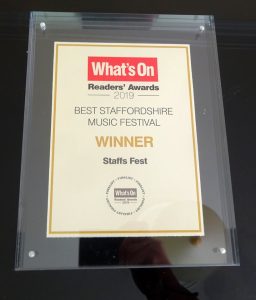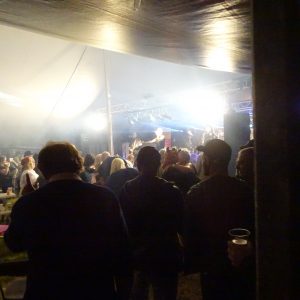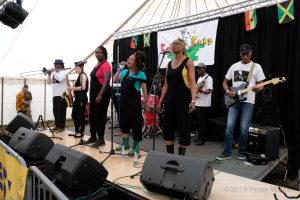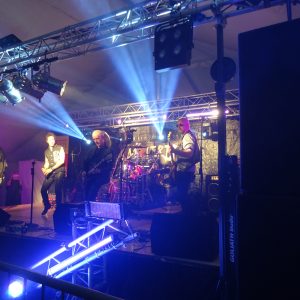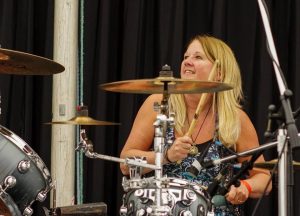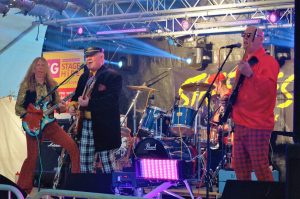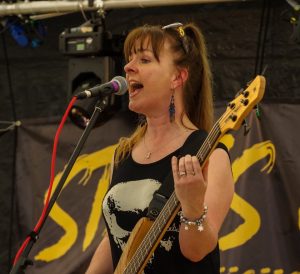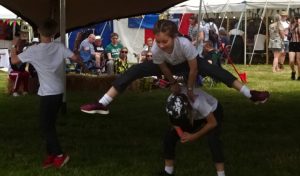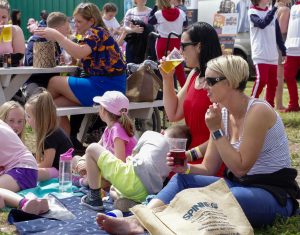Things to see & do in the area
Why not come and stay for the weekend and visit Staffordshire? Camping is included on all ticket types with weekend tickets valid from Thursday 16th September through to Monday 20th September. which gives you the opportunity to explore Staffordshire as well as attend an amazing festival
Stafford and surrounding area
Historically Stafford Town is thought to be founded in about 700 AD by a Mercian prince called Bertelin with Stafford Castle originally built in 1090 overlooking the town. Richard II was paraded through the town’s streets as a prisoner in 1399, by troops loyal to Henry Bolingbroke (the future Henry IV).When James I visited Stafford, he was said to be so impressed by the town’s Shire Hall and other buildings that he called it ‘Little London’. Charles I visited Stafford shortly after the out-break of the English Civil War. He stayed for three days at the Ancient High House the largest timber framed Tudor house in the UK
St Chad’s Church dating back into the 12th century. The main part of the church is richly decorated. Carvings in the church’s archways and pillars may have been made by a group of stonemasons from the Middle East who came to England during the Crusades.
The Shugborough Hall country estate is 4 miles (6.4 km) outside town. It previously belonged to the Earls of Lichfield, and is now owned by the National Trust and maintained by the leaseholder, Staffordshire County Council. The 19th century Sandon Hall is 5 miles (8.0 km) northeast of Stafford. It is set in 400 acres (1.6 km2) of parkland, and is the seat of the Earl of Harrowby. Weston Hall stands 5 miles (8.0 km) east of Stafford, in the Trent valley, with a large park and it was once part of the Chartley estate. It is believed that the main part of the hall was built around 1550
Victoria Park, opened in 1908, is a 13 acre Edwardian riverside park with a play park, bowling green, bird cages and greenhouses
Other places of interest in the area include; Wedgwood, The Black Country Living Museum, Cannock Chase , The Monkey Forest, Gladstone Pottery Museum, Izzak Walton Cottage, German Military Cemetery, The National Memorial Arboretum Alrewas near Lichfield, Drayton Manor Park, West Midlands Safari Park, Alton Towers
Lichfield Cathedral is close by with Warwick Castle and Stratford upon Avon an hour’s drive away
https://en.wikipedia.org/wiki/Stafford
Penkridge
Penkridge is a market town and civil parish in Staffordshire, it has a history since the 17th century as an industrial and commercial centre for neighbouring villages and the agricultural produce of Cannock Chase, strengthening its interpretation as a small town.
The wealthiest establishment in Penkridge in the Middle Ages was that of its collegiate church, the church building of which survived the abolition of the chantries and is the tallest structure in the town centre. The parish is crossed towards its eastern border by the M6 motorway and a separate junction north of the M6 toll between the West Midlands and Stoke-on-Trent. Penkridge has a minor stop on the West Coast Main Line railway next to the Grade I listed medieval church. Penkridge Viaduct and the Staffordshire and Worcestershire Canal are to either side of Market Street and the Old Market Square and are among its landmarks.
Early settlement
Early human occupation of the area around Penkridge has been confirmed by the presence of a Bronze or Iron Age barrow at nearby Rowley Hill. A significant settlement in this vicinity has existed since pre-Roman times, with its original location being at the intersection of the River Penk and what became the Roman military road known as Watling Street (today’s A5 trunk road). This would place it between Water Eaton and Gailey. The Roman settlement of Pennocrucium and earlier settlements were in the Penkridge area, but not on the same site as present town of Penkridge.
Anglo-Saxon origins
The town of Penkridge dates back at least to the early Middle Ages, when the area was part of Mercia, although the foundation date is unknown. King Edgar in 958, described it as a “famous place” so it was already of importance by then. In the Tudor period, it was claimed that the founder of the collegiate church of St. Michael at Penkridge was King Eadred (946-55), King Edgar’s uncle
The Forest
Large areas surrounding Penkridge were placed by the Norman kings under Forest Law, a savage penal code designed to protect the ecology and wildlife for the king’s enjoyment. These areas were part of the Royal Forest of Cank or Cannock Chase and were known as Gailey Hay and Teddesley Hay. Forest law kept most of south Staffordshire in an economic straitjacket. Conflicts between the barons and kings in the 13th century forced a relaxation, starting with the first issue of the Forest Charter in 1217. So it was in Henry III’s reign that Penkridge began to grow economically and probably in population. Local people began to create new fields, called assarts, by clearing the trees and scrub (still a capital crime), and Penkridge acquired an annual fair and weekly market.
Penkridge’s local market has been revived and is held on Wednesdays and Saturdays. The substantial tower of the Grade I listed Church of St. Michael and All Angels on the western edge of town, parts of which date back to the early thirteenth century, is visible even to passing road and rail travellers. A smaller Methodist church is on the largest road (the A449) route through the town, and there are three short streets of buildings dating from the fifteenth and sixteenth centuries, from the railway station eastward. Penkridge has its own historic stocks and cells remain in the town centre.
https://en.wikipedia.org/wiki/Penkridge
Cannock
Cannock Chase is located between Cannock, Lichfield, Rugeley and Stafford. It comprises a mixture of natural deciduous woodland, coniferous plantations, open heath land and the remains of early industry, such as coal mining. Cannock Chase was designated as an Area of Outstanding Natural Beauty in 1958 and is the smallest area so designated in mainland Britain, covering 68 km2 (26 sq miles)
Despite being relatively small in area, the chase provides a remarkable range of landscape and wildlife, including a herd of around 800 fallow deer and a number of rare and endangered birds, not least migrant nightjars. A feeding station at the Marquis Drive Visitors’ Centre, sponsored by the West Midland Bird Club, attracts many species, including brambling, yellowhammer and bullfinch
There are also accessible trails to enable people to experience the health benefits of Cannock Chase, there are many unmarked public paths, cross mountain biking is also popular
On the Chase’s north-eastern edge can be found Shugbrough Hall, ancestral home of the Earls of Lichfield. At its southern edge are the remains of Castle Ring, an Iron Age hill fort, which is the highest point on the Chase. Several glacial erratic boulders are also found on the Chase, remnants of glaciation. One is mounted on a plinth.
The Chase has several war memorials, including German and Commonwealth war cemeteries.
https://en.wikipedia.org/wiki/Cannock_Chase
There or also plenty of hotels and Bed & Breakfasts in the area and Lower Drayton Farm itself has bed & breakfast facilities (recommend to book early)
Free camping on site with all tickets, basic camp site, no electric hook ups .So bring along a tent. camper van or caravan
Dogs welcome but must be kept on a lead at all times

